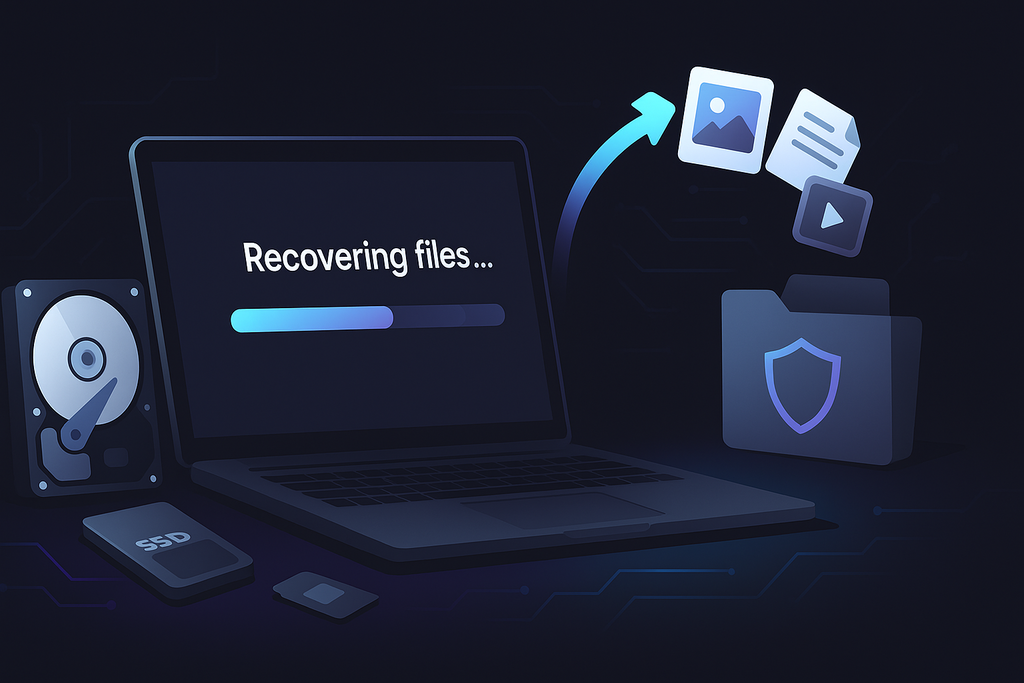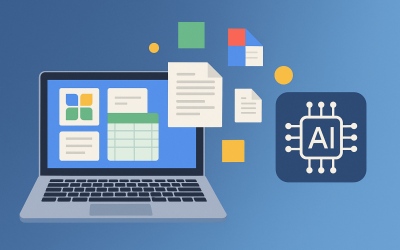The Best Data Recovery Software for 2025

The Best Data Recovery Software for 2025 — Rescue Your Files Before It’s Too Late
Deleted the wrong folder? Formatted an SD card by accident? Or your OS crashed mid-save?
Breathe. In many cases, your files aren’t truly gone until they’re overwritten. With the right
recovery app—and a few smart moves—you can often bring them back.
the very sectors you want to recover. Install recovery software on a different disk or a USB stick,
scan first, then restore.
Top Picks at a Glance
| Tool | Platforms | Why it stands out | Free tier | Typical pricing* |
|---|---|---|---|---|
| O&O DiskRecovery | Windows | Forensic-style deep scans, “Instant Installation” from USB, 400+ file types | Scan/preview | $99 one-time (per PC) |
| EaseUS Data Recovery Wizard | Windows & macOS | Recover while scanning, NAS recovery, file/video repair | Up to 2 GB free | $69.95 (1-mo) / $99.95 (1-yr) / $149.95 (lifetime) |
| Wondershare Recoverit | Windows & macOS (plus NAS/Linux targets) | Enhanced photo/video recovery, bootable media, NAS & Linux support | 100 MB free (Windows) | $59.99 (1-mo) / $69.99 (1-yr) / $129.99 (perpetual) |
*Prices are commonly advertised as of 2025 and may vary with promos/regions.
O&O DiskRecovery — The Deep-Scan Specialist (Windows)
If you’re on Windows and want a classic deep scan that combs through every sector, O&O DiskRecovery is a dependable pick.
It recognizes 400+ file types and offers quick and deep modes to recover data after deletion, formatting, or file system damage.
Why we like it
- Instant Installation: Run from a USB stick to avoid writing to the problem drive.
- Signature-based carving: Rebuild files even when the directory structure is gone.
- Simple wizard: A guided flow from scan to preview to recovery.
Best for: One-time Windows recoveries and reformatted cards/drives.
Pricing: $99 one-time. Free trial scans and previews recoverable items before purchase.
EaseUS Data Recovery Wizard — The Friendly All-Rounder (Windows & macOS)
EaseUS balances power with approachability. Beyond the usual deleted/format/lost-partition cases, it adds quality-of-life features
like recover while scanning, file/video repair, and direct NAS recovery—useful for home servers and small studios.
Highlights
- Recover While Scanning: Start pulling files before the full pass completes.
- NAS Recovery: Rescue data from network storage without complicated workarounds.
- File/Video Repair: Fix corrupted photos and footage as you go.
- Cross-platform: First-class Windows and macOS support.
Best for: Mixed Windows/Mac environments and general-purpose recoveries.
Free tier: Up to 2 GB. Pricing: $69.95 (1-mo) / $99.95 (1-yr) / $149.95 (lifetime), per device.
Wondershare Recoverit — The Media Recovery Pro (Windows, macOS, NAS/Linux)
If your work revolves around photos and video, Recoverit shines. Its enhanced media recovery
can reassemble fragmented 4K/8K footage from cameras, drones, and action cams. It also creates
bootable media to grab files from a non-booting OS and supports NAS/Linux targets.
Highlights
- Enhanced Photo/Video Recovery: Recovers complex, fragmented media assets.
- Bootable Rescue Media: Start from USB when your system won’t.
- NAS & Linux: Works across common NAS and Linux file systems.
Best for: Creators, IT helpers, and anyone handling unbootable systems or NAS arrays.
Free tier: 100 MB (Windows). Pricing: $59.99 (1-mo) / $69.99 (1-yr) / $129.99 (perpetual), region-dependent.
Which One Should You Pick?
- Pick O&O DiskRecovery if you’re on Windows and prefer a focused, buy-once deep-scan utility with smart safeguards like Instant Installation.
- Pick EaseUS if you need the broadest, easiest cross-platform coverage with extras like NAS recovery and built-in repair tools (and a generous free tier).
- Pick Recoverit if your priority is photo/video integrity, bootable rescue media, and NAS/Linux scenarios.
Step-by-Step Recovery Workflow (That Actually Works)
- Quarantine the drive: Stop using it. If you hear clicking or grinding, power down and consider a professional lab.
- Work from another system if possible: Download your chosen tool to a clean machine or a USB stick.
- Connect the problem disk externally: Use SATA/USB dock, enclosure, or card reader.
- Run a quick scan first: Grab easy wins without waiting for a full deep scan.
- Run a deep/signature scan if needed: Especially after formats or file system corruption.
- Preview before recovering: Verify thumbnails and file integrity.
- Recover to a different disk: Never write back to the source drive.
- If results are thin and the drive seems unhealthy: Stop additional attempts; each spin-up risks further damage.
Tip: For Windows-only emergencies, O&O’s Instant Installation from USB helps avoid accidental writes to the failing disk. For mixed environments, EaseUS and Recoverit both provide robust preview flows before you pay.
Future-Proof Your Data (So You Don’t Need This Again)
The easiest recovery is the one you never need. Adopt the 3-2-1 rule:
three copies of your data, on two different media, with one offsite. Pair a local image backup
(e.g., system image on an external drive) with a reputable cloud backup.
- Automate it: Scheduled backups reduce human error.
- Test restores: A backup you can’t restore isn’t a backup.
- Versioning matters: Snapshots protect you from accidental overwrites and ransomware.
Bottom Line
Data loss feels catastrophic, but modern recovery tools can do remarkable work. Start with a safe, non-destructive scan:
O&O DiskRecovery for focused Windows deep scans, EaseUS Data Recovery Wizard for the most approachable cross-platform option,
and Wondershare Recoverit for media-heavy or NAS/Linux scenarios. Act quickly, recover to a separate drive,
and set up backups so this is the last time you need an article like this in a panic.
Affiliate disclosure: If you click these buttons and make a purchase, we may earn a commission—at no extra cost to you.
















